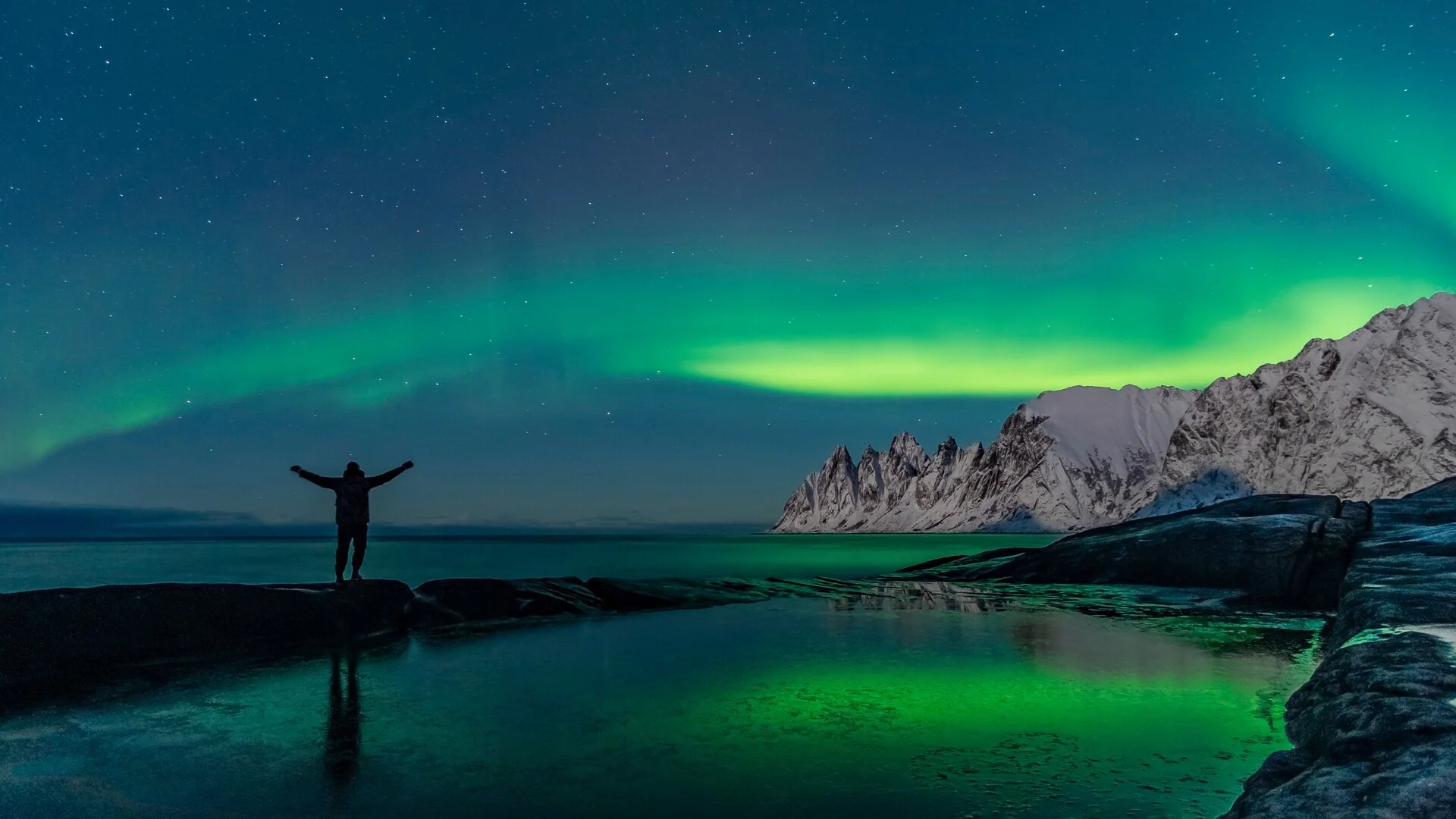
What causes the Northern Lights?
The aurora borealis has danced across northern skies since the dawn of our planet. Dinosaurs, woolly mammoths, and Vikings all walked beneath it, just as we do today. It is a constant of our world. But what creates this awe-inspiring phenomenon?
Long before we knew the facts of the Northern Lights, our ancestors attached stories of gods and monsters that, to them, explained why the aurora occurred and taught their people to respect, fear, or worship the lights in the sky. These stories eventually evolved into legends and myths.
Today, we know why the Northern (and Southern) Lights occur, but their mystique is as alluring as ever – even when you’re as well versed in Northern Lights facts as astronomer and self-confessed aurora addict Tom Kerss. Despite his degree in astrophysics and deep understanding of the science behind the phenomenon, he describes the Northern Lights as “like real magic happening in front of your eyes”.
Tom’s sentiments are echoed by fellow astronomer Dr Sadie Jones. “When the aurora takes over the whole sky, you have this sense of putting your life into perspective within the scale of the universe. It can make you think: you're part of this, you're part of this whole universe.”
The science and facts behind the Northern Lights
So, what are the Northern Lights? “I never get tired of answering this question as I want people to understand just how amazing what we are seeing really is!” says irrepressibly enthusiastic Northern Lights expert Dr John Mason MBE.
The aurora veteran, with over 15 years of seeing the aurora aboard Hurtrigruten, explains “The aurora borealis is caused by electrically charged particles that are released by the Sun and travel 150 million kilometres across space to the Earth.”
“If you look at a picture of the Sun during a total solar eclipse, you’ll see the dark disk of the Moon in the middle, blocking out the Sun, with streamers of the Sun's outer atmosphere, the corona, around the edge going out into space. Those streamers feed into what we call the solar wind – a steady stream of gas and electrically charged particles flowing out from the Sun all the time.”
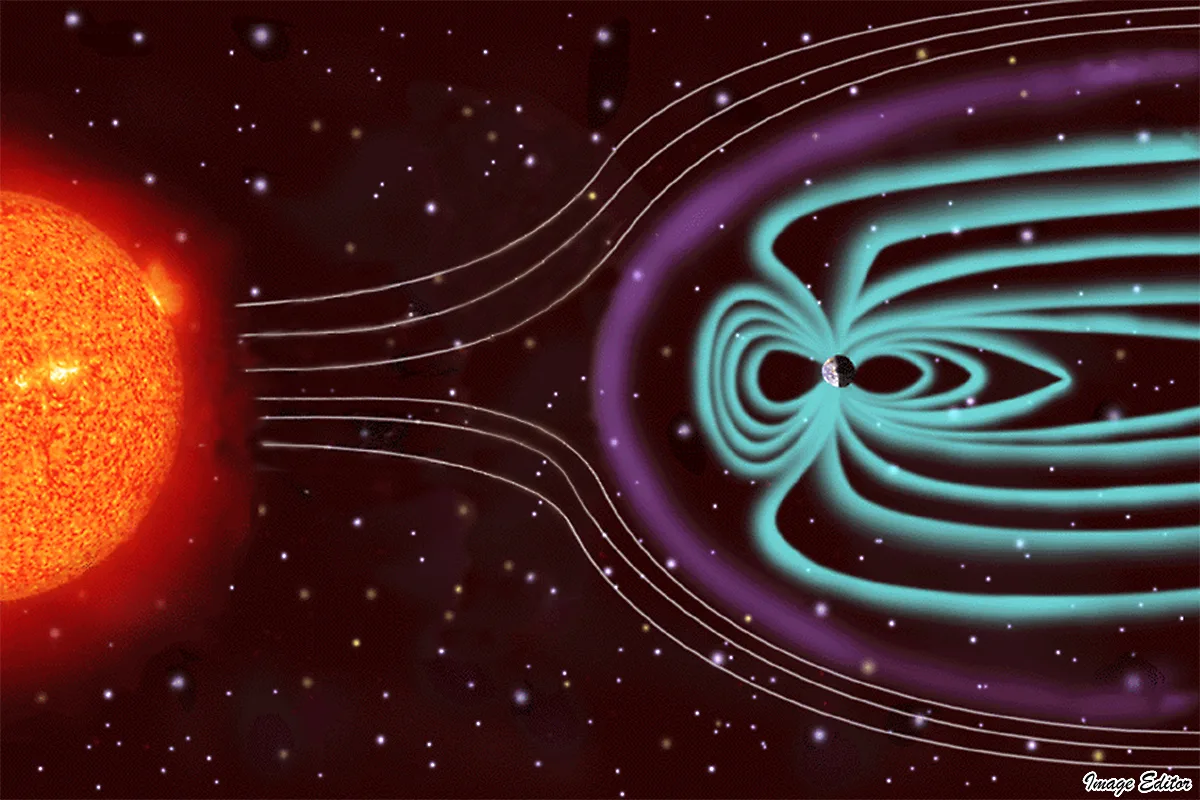
These charged particles travel across space at varying speeds and, after a few days or so, some of them encounter the Earth’s magnetic field, the magnetosphere, where they are funnelled down around the north and south magnetic poles – into regions known as the Auroral Ovals.
As the incoming particles collide with atoms and molecules of oxygen and nitrogen in the Earth’s upper atmosphere, they excite them to produce light – the light of the aurora.
The detail of the phenomenon is not lost on Darren Baskill, a physics and astronomy lecturer at Sussex University. Neither is its impressiveness. “It's only within the last 100 years that we've understood what the aurora actually are. Understanding exactly what is happening as I watch those infinitesimally small particles collide with the Earth's upper atmosphere, and then following the magnetic field lines, which you can't normally see, just blows my mind.”
When is the best time to see the Northern Lights?
The Northern Lights flicker across Arctic skies throughout the year but the best time to see them in Norway is from September to March, when it’s dark enough at night to see them. They sometimes appear in early spring, too.
Within that window, the best time of day to see the Northern Lights is between 5pm and 2am – although Dr Mason says you might see the colours more easily at twilight. “That’s because the brightness of the background sky will trigger the colour sensors in your eye so that when the Lights do appear, you can see the colour in them. When the sky gets really dark, you’ll find you can’t see the colour as well as you did earlier on, unless the display becomes brighter. It’s all about how our eyes perceive this in the darkness.”
Some aurora displays last for just a few minutes, disappearing before reappearing minutes or hours later. Some last for 15 to 30 minutes. If you’re really lucky, you could be wowed for a couple of hours or more.
The Solar Maximum: your best chance to see the aurora
The intensity and frequency of the Northern Lights also depends on the Sun’s activity.
Dr Mason states “the more dramatic displays occur when the number of electrically charged particles and the speed of the solar wind are enhanced by some form of eruption on the Sun.”
Based on the Solar Cycle, the next Solar Maximum, which increases your chances of seeing the Northern Lights and to experience the most impressive displays, is due next season in 2024-25. The next Solar Maximum after that won’t be for around another 11 to 15 years.
Darren Baskill predicts the Solar Maximum will produce “dramatically more” auroral displays. “We're now approaching the maximum, so I'd expect high levels and basically every few days seeing aurora. Whereas five years ago, you might have to wait weeks to see anything.”
Are there different types of auroras?
According to Dr Mason, there are several different auroral forms. “When you first see an auroral display, it might appear greyish or grey with a hint of green, but it will usually form an arc or arch of greenish light in the northern sky – sometimes with rays a bit like searchlight beams extending upwards from the arc.”
From the arc, within a matter of minutes, or sometimes hours, the phenomenon can then develop into a variety of amazing forms, such as the auroral ribbon or band, snaking its way across the Arctic sky, which can change and distort quite rapidly over time. “You might also have a curtain or drape of auroral rays, stretching up into the sky,” says Dr Mason. “It can look like a curtain gently blowing in a breeze.”
“Sometimes, the rays stretch high up into the Arctic sky, coming together overhead. When this happens, you have the chance to see one of the most dramatic of all auroral forms: the corona, or crown. It can look like a firework that's burst coming down into the sky above you.”
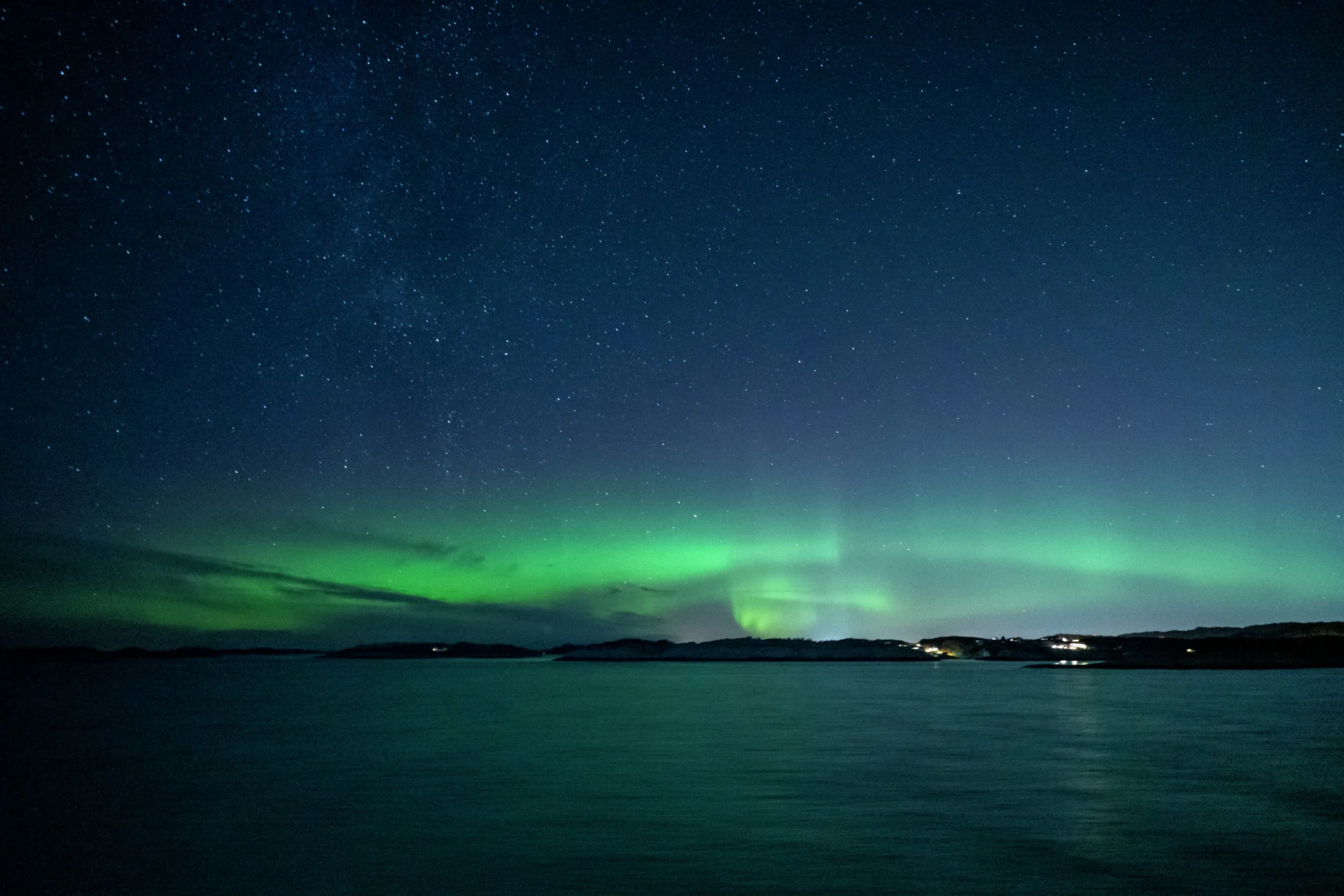
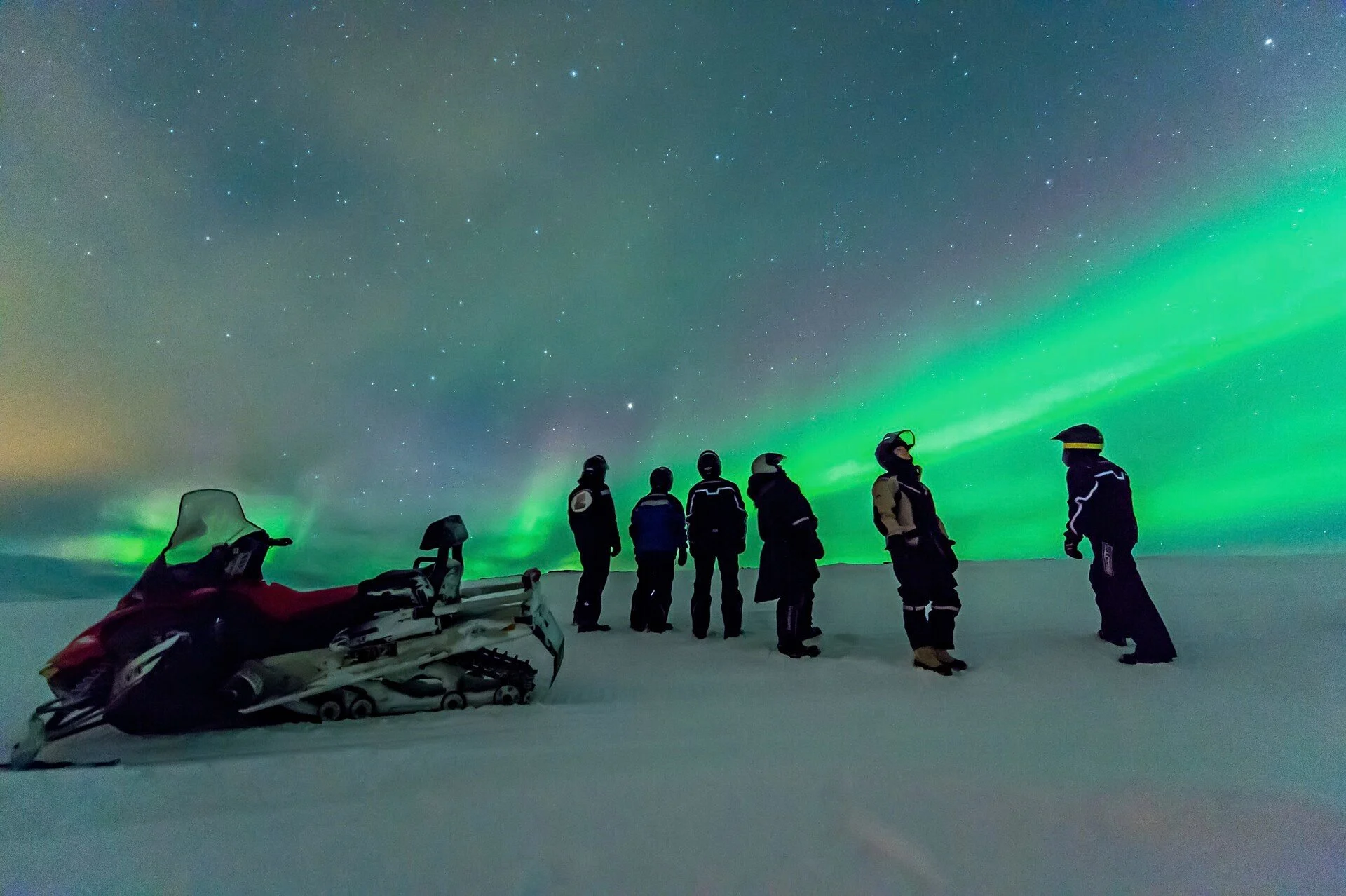
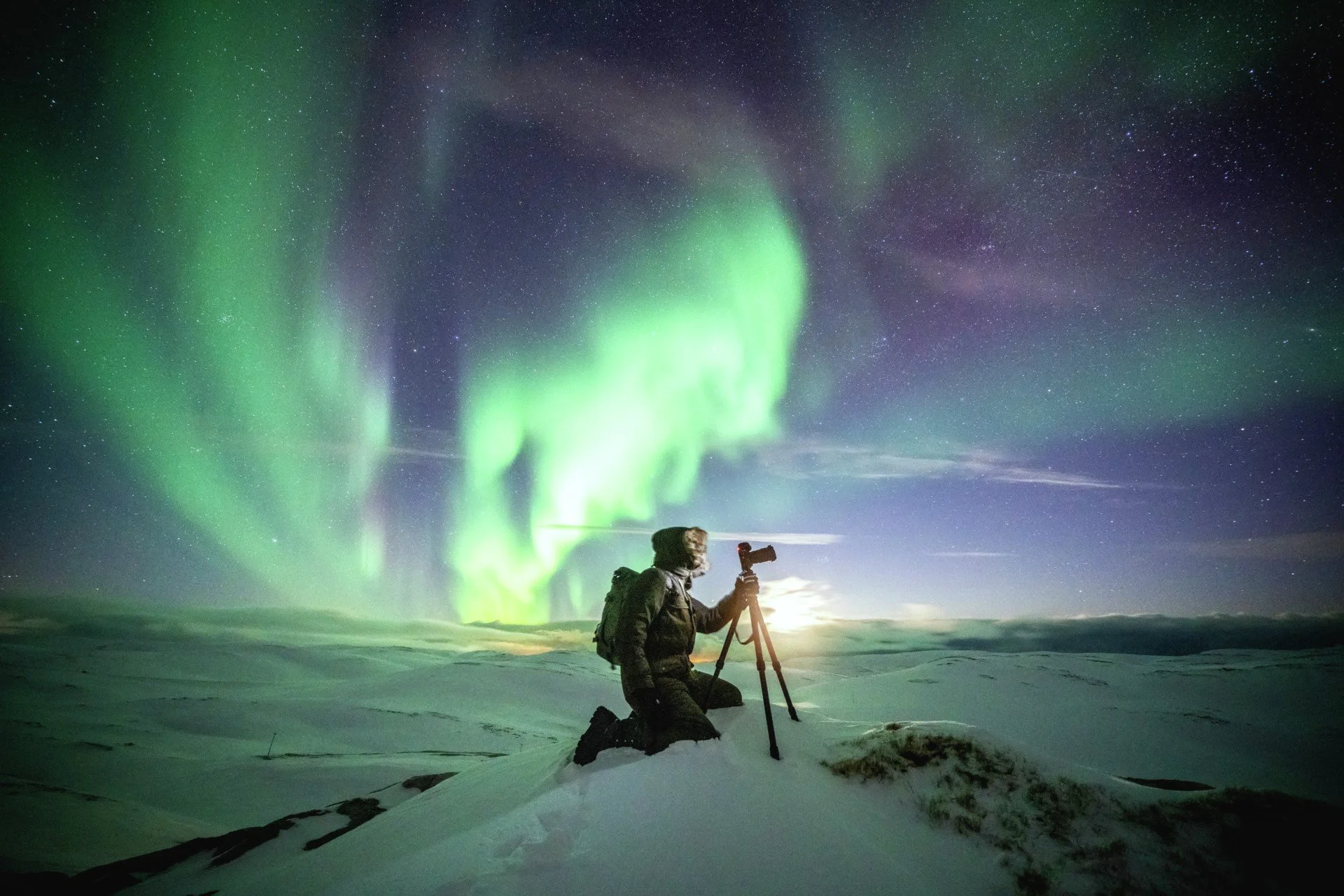
Why are there different colours in the Northern Lights?
Dr Mason states that all auroral activity is caused by electrically charged particles coming into the atmosphere at very high speed, colliding with the particles of air high above the ground. As the different excited particles in the air return to their normal state, they emit the excess energy as different colours of light.
There are two main gases in the air we breathe: oxygen, which makes up about one fifth, and nitrogen, which is about four fifths. The green and the rosy red colours are caused by excited atoms of oxygen. The green from oxygen atoms 100 to 150 kilometres above the ground, and the red is 150 to 350 kilometres above the ground.
The other main gas in the atmosphere is nitrogen, which is a difficult gas to excite. Dr Mason says “You've either got to bash the particles very hard or bathe them with ultraviolet light, which makes them easier to excite. A background purple or mauve colour is due to excited atoms of nitrogen typically 250 to 400 kilometres above the ground.”
“Excited atoms of nitrogen also produce that most beautiful of all auroral colours: the beautiful lilac-pink that you can see in the most active displays where particles are penetrating down to between 95 and 100 kilometres above the ground. Excited atoms of nitrogen may also produce a turquoise colour or a deeper blue.”
To learn how best to capture the colours of the aurora on camera, see our Northern Lights photography tips.
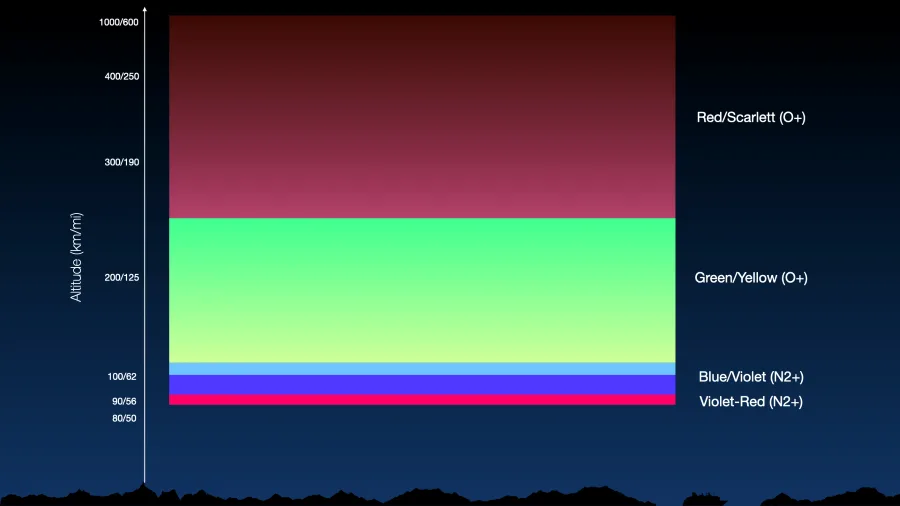
Do the Northern Lights affect life on Earth in some way?
Dr Sadie Jones, astronomer and senior teaching fellow at the University of Southampton, is busily engaged on a project named Aurora Zoo. One of its aims is to understand what happens to the energy released into the upper atmosphere when the aurora occurs and what effect this has on man-made satellites and the weather on Earth.
“Most meteorological agencies concentrate on what’s happening with the weather up to 100 kilometres in the atmosphere,” says Dr Jones. “They never used to be concerned about anything happening above 100 kilometres because, to them, that's space.”
“The aurora occurs between 100 - 300 kilometres up and this new Aurora Zoo research involves zooming in on the movements of the aurora in upper atmosphere, it's giving us more data about what's going on.”
“We now know that the aurora, even though it's happening much higher, does play into the temperature and the weather modelling that happens below. The weather agencies are realising that they might need to look a bit higher than they used to before.”
Another aspect of the Aurora Zoo project is examining the movement and shape of the aurora. Anyone can take part in this exciting new research by helping the scientists analyse their masses of data, and by doing so you will reveal hidden details of this exciting phenomenon of the night sky.
What can we learn from the Northern Lights?
Just as fascinating as the science behind the aurora are the ways that our understanding of the Northern Lights is helping scientific research in other areas, such as climate and weather modelling – and even in other worlds.
"My favourite area of aurora science right now, because it's in its infancy, is taking what we understand about the aurora on Earth, and reverse engineering that to explore other worlds,” says Tom Kerss. “A good example is Ganymede, one of Jupiter's moons. Auroral emissions that were discovered there have been used as a proxy to determine that there is likely a saltwater ocean under its icy surface. A particular density of saltwater, acting as a large electromagnetic inside the moon, would result in a secondary magnetic field that stabilises the auroras.
“If our aurora knowledge can be used to tell us something about the composition of our planet’s atmosphere or magnetic field, it could also become a key clue in finding conditions that may be conducive to life on other worlds throughout the Milky Way. The idea that this phenomenon from the past that was previously steeped in mystery is becoming part of the toolkit for studying alien worlds is really exciting.”
Stop searching, start seeing
For the best chance of seeing the lights, you need to be under or close to one of the Auroral Ovals. We sail across and beyond the Arctic Circle, directly beneath the Auroral Oval, allowing you to witness the wonder of the lights, not just once but multiple times.
